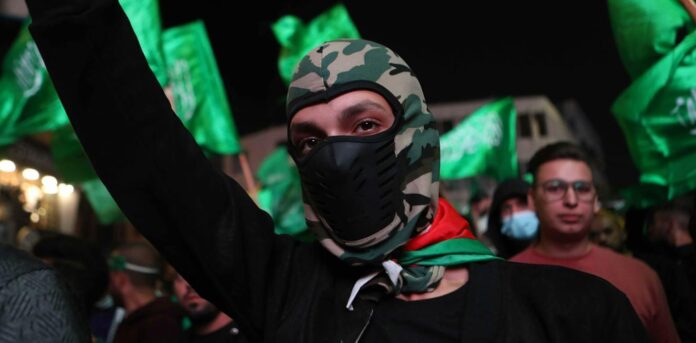Gaza war: Hamas’s web of allies in the October 7 attacks makes ending the conflict much harder for Israel
By Brian J. Phillips, University of Essex
There have been reports that Hamas cooperated with a number of other armed groups to stage the October 7 attacks. If correct, this indicates substantial challenges for Israel – especially when it comes to ending the current conflict.
The BBC detailed how five armed groups joined with Hamas for the attacks which resulted in the deaths of 1,200 people and the kidnapping of a further 240. These were the Ali Abu Mustafa brigades, the Al-Aqsa Martyrs brigades, the Omar al-Qasim forces, Palestinian Islamic Jihad (PIJ), and the Mujahideen brigades. The report said these groups had trained together for an attack like this since at least 2020 – which helps explain why the assault was so lethal.
Decades of research on cooperation among militant organisations, including my own book and articles, suggests that relationships among armed groups can make them more violent and more effective, as they share resources and teach each other new tactics. It can enable them to survive longer, leading to serious complications with peace processes.
It is noteworthy that Hamas is working not only with other Islamist and Iran-backed groups, such as PIJ, but also relatively secular groups such as the armed wing of the Marxist group, the People’s Front for the Liberation of Palestine (founded by a Christian, the late George Habash). Beyond the five groups that apparently participated in the October 7 massacres, as many as ten other groups have trained with Hamas in the years leading up to it, according to the BBC report.
The fact that Hamas seems to be leading a large and relatively diverse coalition suggests Israel is not only facing a Hamas problem. While it is the largest and most capable armed Palestinian group, its allies suggest a broader network of support and threats to Israel. Groups that hadn’t used much violence recently are now side by side with Hamas at war.
The large and varied coalition also raises questions about Israeli intelligence capabilities. If it were just Hamas who had attacked, it might have been relatively easy for that organisation to keep its plans secret. But sharing attack planning among at least five other organisations suggests there were many opportunities for details to leak to Israel.
The possibility of such leaks is usually a barrier to cooperation among militant groups. But the fact that this substantial network of armed groups was apparently able to plan in secret (or at least, apparently take Israeli intelligence by surprise) suggests a tight network.
Spoilers and sabotage
Another implication of so many groups fighting Israel is that stopping the conflict will be more complicated. It can be challenging to get one group to agree to a ceasefire, but even more so when there are various groups with distinct ideologies. All too often, there are “spoilers” who sabotage the peace, causing negotiations to break down and war to resume.
Just after an extension to the recent ceasefire was announced, three Israeli citizens were shot dead in Jerusalem by gunmen reportedly affiliated with Hamas. Hamas has a history of breaching ceasefires – when the Palestine Liberation Organisation (PLO) was attempting to reach peace settlements during the 1990s, negotiations were frequently interrupted by Hamas violence.
There is also the related issue of falsely claimed attacks. For example, if Hamas declares a ceasefire, another group that doesn’t agree with the ceasefire might claim an attack in Hamas’s name to sabotage the peace. Regardless of ceasefire conditions, with so many active militant organisations, it could be difficult to attribute violence to particular groups.
Hezbollah and the fear of regional conflict
One important militant group that has not formally teamed up with Hamas yet is Hezbollah. With an estimated 60,000 armed fighters and reservists, the “Party of God” is mainly situated just across Israel’s northern border in Lebanon.
Often called a “state within a state”, Hezbollah also holds considerable political sway in Lebanon. So far since October 7, there have been some exchanges of fire between Israeli troops and Hezbollah fighters, but there is as yet no evidence of coordinated attacks alongside Hamas.
This has disappointed some Palestinians – but it is good news for Israel and regional stability. If Hezbollah got involved, it would escalate the war into an international conflict – and probably a vastly more violent one. Hamas already has a strong network of allied armed militias, but it is not as strong as it would be with Hezbollah fully in the fight.
Overall, Israel has two possible strategies to take into consideration when dealing with the broad network of Hamas-linked opposition. It could try to deal with them as one cohesive bloc, and hope there are no spoiler incidents. Or, it could try to sever links between the groups – isolating one group at a time, using carrots or sticks to get the groups to stop cooperating with Hamas.
Either way, to end the current conflict, inter-group dynamics will need to be taken into consideration. And in future, when intelligence gathering, evidence of group cooperation and training should be taken more seriously.![]()
Brian J. Phillips, Reader (Associate Professor) in International Relations, University of Essex
This article is republished from The Conversation under a Creative Commons license. Read the original article.



